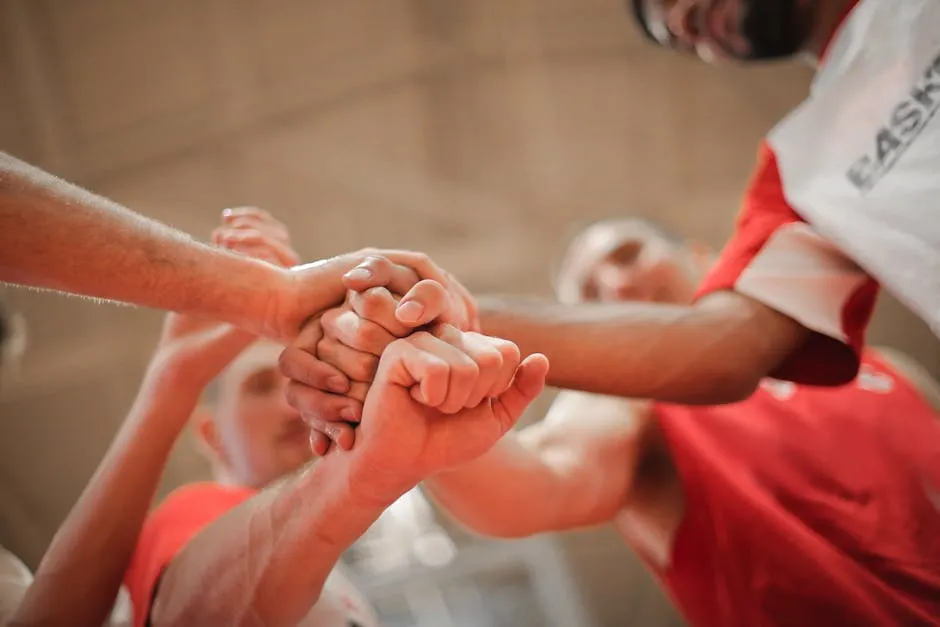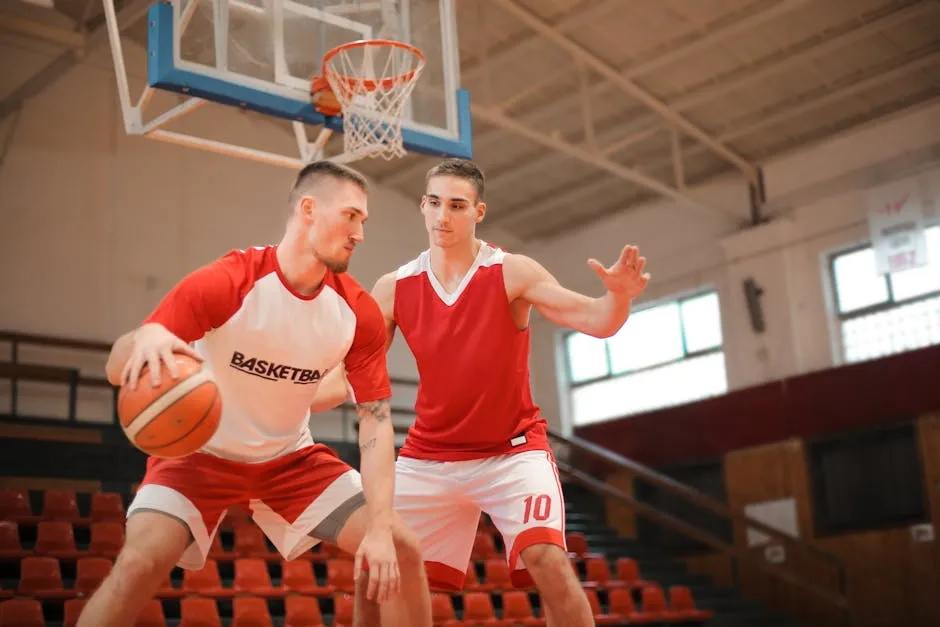Introduction
The Ivy League, a unique blend of prestigious academia and competitive athletics, has carved out a special niche in college basketball. Comprising eight member schools—Harvard, Yale, Princeton, Cornell, Brown, Columbia, Penn, and Dartmouth—this league showcases not only top-tier talent on the court but also a commitment to academic excellence. Here, athletes are often scholars first, balancing rigorous studies with their passion for basketball. The combination makes for thrilling games where intelligence meets athleticism.
This article aims to provide a thorough analysis of Ivy League men’s basketball statistics, delving into player and team performance, emerging trends, and historical context. We’ll sift through the numbers to uncover insights that reveal how these institutions compete at a high level while maintaining their academic reputations. By the end, you’ll have a clearer picture of the league’s dynamics, from standout players to team strategies.
Statistics play a crucial role in this endeavor. They help us understand team efficiency, player contributions, and overall trends in the league. For coaches, statistics guide strategy, allowing for data-driven decisions that can make or break a season. For fans, these numbers enhance engagement, offering a deeper appreciation for the game. After all, who doesn’t enjoy dissecting the latest scoring averages or rebound stats as their favorite team battles for postseason glory? As we analyze the current season, you’ll see how these statistics illuminate the path to success in Ivy League basketball. Basketball Analytics: A Guide to the Data-Driven Game can enhance your understanding of these critical statistics.
Understanding statistical learning can enhance your analysis of basketball performance. an introduction to statistical learning with python book length
Current Season Overview
2023-24 Ivy League Men’s Basketball Standings
| School | Conf | CPct. | Overall | Pct. | Streak |
|---|---|---|---|---|---|
| Princeton | * | 12-2 | 24-5 | .828 | L2 |
| Cornell | * | 11-3 | 22-8 | .733 | L2 |
| Yale | * | 11-3 | 23-10 | .697 | L1 |
| Brown | * | 8-6 | 13-18 | .419 | L1 |
| Harvard | 5-9 | 14-13 | .519 | L3 | |
| Columbia | 4-10 | 13-14 | .481 | L6 | |
| Penn | 3-11 | 11-18 | .379 | L1 | |
| Dartmouth | 2-12 | 6-21 | .222 | W1 |
Teams marked with an asterisk (*) have clinched an Ivy Madness berth, which heightens the stakes of each matchup as they vie for postseason positioning. The standings reflect not just wins and losses, but the overall competitiveness within the league. Princeton leads the pack with a commendable 12-2 conference record, establishing itself as a formidable contender. Meanwhile, Cornell and Yale closely trail, setting the stage for an electrifying finish to the season.

Analyzing these standings provides insights into each team’s performance and potential playoff scenarios. For instance, Princeton’s recent two-game losing streak raises questions about their consistency as they head into critical matchups. Cornell and Yale, on the other hand, will be looking to capitalize on any Princeton missteps to secure a higher seed in the upcoming tournament. As the season progresses, watch for shifts in these standings, reflecting the heated battles that define Ivy League basketball. Each game is a testament to the skill and determination of these student-athletes, making for a captivating season ahead.
Key Highlights of the Season
Notable Games
This season has been a rollercoaster ride for Ivy League men’s basketball. From stunning upsets to nail-biting finishes, the games have kept fans on the edge of their seats. One such highlight was Yale’s shocking victory over Auburn, a game that no one saw coming. The Bulldogs managed to clinch a 78-76 win, showcasing their resilience and skill. This victory not only boosted Yale’s confidence but also put the Ivy League on the national radar.

Another memorable game was Princeton’s face-off against Cornell. In a contest that felt more like a heavyweight boxing match, Princeton prevailed in a closely contested battle, further solidifying its position at the top of the standings. Such games highlight the competitive nature of the Ivy League, where every match carries significant weight in the race for the postseason.
These notable games have not just impacted team standings but have also made waves in statistical categories, affecting everything from scoring averages to defensive metrics. If you want to dive deeper into the stories behind these stats, check out The Book of Basketball: The NBA According to the Sports Guy.
Top Performers
With every season, certain players rise to the occasion, and this year is no exception. Leading the charge is Kino Lilly from Brown, who has been a scoring machine. Averaging 18.8 points per game, he has not only been crucial in Brown’s offensive strategies but also stands out as one of the league’s top talents. His ability to shoot from distance, with an average of 3.0 three-pointers made per game, makes him a formidable opponent.

Another standout is Danny Wolf from Yale. With a whopping 9.8 rebounds per game, he has proven to be a dominant force on the boards. His rebounding prowess has significantly contributed to Yale’s success, allowing them to control the pace of games and secure second-chance opportunities. To stay hydrated during those intense games, you might want to grab a Hydro Flask Water Bottle to keep your drinks icy cold!
Chisom Okpara from Harvard is also making waves, contributing significantly with 16.5 points per game. His all-around skill set, including solid free-throw shooting and playmaking ability, has been a crucial asset for Harvard in their pursuit of a better season.
The performances of these players not only reflect their individual talents but also their importance to their teams’ overall success. As the season progresses, keep an eye on these athletes; their contributions could very well lead their teams deep into the Ivy Madness tournament.
Assists and Playmaking
– Top Assist Leaders: In the Ivy League, playmaking is essential. Malik Mack of Harvard leads with an impressive 4.8 assists per game. His ability to set up teammates showcases his vision on the court. Kino Lilly from Brown follows closely with 3.6 assists per game, proving just how crucial he is to his team’s offensive flow. These players not only dish out assists but also create scoring opportunities, making them invaluable assets to their squads.

– Analysis: Playmaking impacts team success significantly. A strong assist leader can elevate a team’s performance. When players like Mack and Lilly create opportunities, it opens up the floor. Teams become more dynamic and unpredictable. Good playmaking can turn a good team into a great one. It builds chemistry and encourages teamwork, vital for any successful basketball program. The Ivy League’s competitive nature demands that teams excel in this area to secure victories.
Defensive Leaders
– Top Defenders: Defense wins games, especially in the Ivy League. Chris Manon from Cornell shines with 2.2 steals per game, making him a nightmare for opposing offenses. Yale’s Danny Wolf isn’t just great at rebounding; he also excels with 1.4 blocks per game. These stats highlight their contributions to their teams’ defensive strategies.

– Analysis: The role of defense is paramount in Ivy League basketball. A strong defense can disrupt opponents’ rhythm and create scoring chances. Teams with top defenders like Manon and Wolf often find success in clutch situations. Defense also fosters a winning mentality. When players commit to defense, it builds a culture of hard work and resilience. In a league where every game is a battle, strong defensive play can be the difference between a win and a loss.
Advanced Statistics
– Overview of Advanced Metrics: Advanced statistics like Player Efficiency Rating (PER), Usage Rate (USG%), and Win Shares (WS) are game-changers in basketball analytics. PER provides a comprehensive look at a player’s overall contribution. Usage Rate shows how much a player is involved in their team’s offense, while Win Shares estimate how many wins a player contributes to their team.

– Analysis: Embracing advanced statistics allows teams to gain deeper insights. For instance, a high PER indicates a player is efficient and impactful on the court. Understanding these metrics helps coaches make informed decisions about player rotations. It also allows fans to appreciate the nuances of player performance. In Ivy League basketball, where strategy is crucial, advanced stats can illuminate the path to victory. They help teams identify strengths and weaknesses, ultimately shaping game plans that lead to success.
Team Statistics
Overall Team Performance
When it comes to Ivy League men’s basketball, team statistics tell a compelling story. Let’s break down the essentials: scoring, defense, rebounding, and assists for the top teams.
Scoring and Defense
In the 2023-24 season, scoring averages vary significantly among the Ivy League teams. Leading the charge is Cornell, boasting an impressive 82.1 points per game (PPG). This high-scoring output is complemented by a scoring margin of +7.9, indicating they not only score well but also limit opposing teams effectively.

Princeton follows with 77.1 PPG and a scoring margin of +11.1, revealing their knack for both offense and defense. Yale also stands strong with 75.2 PPG and a solid scoring margin of +8.6. These numbers highlight the competitive nature of scoring in the league.
On the defensive side, Yale excels with an average of 67.5 points allowed per game. Cornell is slightly less effective, allowing 74.0 PPG, which raises questions about their defensive strategies. Princeton’s opponents score an average of 66.0 PPG. These figures paint a picture of teams that can score but also need to tighten their defensive game when it matters most.
Rebounding and Assists
Rebounding is crucial for controlling the game, and Yale leads the pack with an average of 36.5 rebounds per game (RPG). This helps them secure possession and create second-chance opportunities. Cornell follows closely, averaging 34.1 RPG, which contributes to their scoring prowess.

Assists are another vital metric, showcasing teamwork and ball movement. Cornell leads here too, averaging 17.9 assists per game. This suggests a high level of collaboration on the court, with players actively looking for each other. Princeton, averaging 14.9 assists per game, illustrates the importance of playmaking in their offensive strategies. If you’re looking to improve your game, consider investing in Basketball Training Equipment – Dribble Stick to work on your skills!
Team Comparisons
Statistical Comparison
– Scoring: Cornell’s 82.1 PPG places them at the forefront, while Princeton’s 77.1 PPG showcases a solid offense as well. Yale’s 75.2 PPG indicates a competitive edge, but they may need to find ways to boost their scoring in tight games.

– Defense: Princeton’s opponents only average 66.0 PPG, showing their defensive capabilities. Yale follows with a respectable 67.5 PPG allowed, but Cornell’s 74.0 PPG suggests an area for improvement.
– Rebounding: Yale’s 36.5 RPG is impressive, giving them an advantage on the boards. Cornell’s 34.1 RPG is solid, but Princeton’s 34.0 RPG shows they can hold their ground.
– Assists: Cornell’s 17.9 assists per game indicate a well-coordinated offense. In contrast, Princeton’s 14.9 assists suggest they could benefit from better ball movement.
Analysis
These comparisons highlight that while Cornell excels in scoring and assists, their defensive struggles could be their Achilles’ heel. Princeton, with a balanced attack and strong defense, emerges as a formidable opponent. Yale, while strong on the boards, must enhance their scoring efficiency to compete at the highest level.
Trends Over the Season
As the season progresses, team performance often fluctuates. Analyzing these trends offers insights into the dynamics at play.

Performance Trends
The current season has seen surprising shifts. For instance, Princeton started strong but recently faced a two-game losing streak, sparking concerns about their consistency. On the other hand, Cornell and Yale have shown resilience, battling through slumps to maintain their playoff positioning.
Winning streaks can create momentum, while slumps might signal the need for strategic adjustments. Observing these trends helps fans and analysts alike predict which teams might surge or stumble as the postseason approaches.
Impact of Key Players
Individual performances significantly influence overall team statistics. Look no further than Yale’s Danny Wolf, who averages 9.7 RPG and contributes significantly to their defensive and rebounding success. His presence on the court allows Yale to control the pace of games effectively.

Similarly, Cornell’s scoring leader, Kino Lilly, averaging 18.8 PPG, plays a pivotal role in their offensive output. His ability to create scoring opportunities not only boosts his stats but also elevates the entire team’s performance. If you’re a gamer and want to experience basketball in a different way, check out NBA 2K24, the latest in the series!
In conclusion, team statistics in the Ivy League paint a vivid picture of the basketball landscape. As teams continue to battle it out, these numbers will evolve, offering insights into who might come out on top when it counts the most. Keep an eye on these trends, as they often forecast the intensity and excitement of the Ivy Madness tournament ahead!
Historical Context and Trends
Historical Performance of Ivy League Teams
Ivy League basketball has a rich history that dates back over a century. The league, known for its academic rigor, has produced some fierce competitors on the hardwood. Historically, teams like Princeton and Yale have dominated the league, consistently showcasing their talent and skill.
In the past, the Ivy League has had its fair share of NCAA tournament appearances, with notable teams making runs in March Madness. For instance, Yale made headlines in recent years by upsetting higher-ranked teams, including a stunning victory over Auburn. These moments have solidified the Ivy League’s reputation as a conference that can compete with the best.
Championship wins are another highlight of the Ivy League’s journey. While the league hasn’t secured an NCAA championship, it has produced several Final Four appearances, showcasing the skill and determination of its teams. Over the years, Ivy League teams have adapted to the changing landscape of college basketball, embracing new strategies and styles of play.
Statistics have evolved significantly in this league. From basic point totals to advanced metrics, the way teams analyze performance has transformed. Early analyses primarily focused on points scored and rebounds. Today, teams utilize advanced stats like Player Efficiency Rating (PER) and Win Shares (WS) to assess player contributions more accurately. This evolution reflects a broader trend in basketball, where data-driven decision-making has become essential for success.
Impact of Ivy League Players in NCAA
The Ivy League has produced numerous players who have made significant impacts in professional basketball. Notable alumni include Jeremy Lin, who gained fame in the NBA, and more recently, players like Caden Pierce and Malik Mack, who have shown promise on the collegiate stage. These athletes have not only excelled academically but have also showcased their skills at the highest levels of competition.

The transition from college to professional basketball can be daunting, yet many Ivy League players have successfully made this leap. Their collegiate statistics often tell a story of resilience and talent. For instance, players like Kino Lilly have not only excelled in scoring during their college careers but have also demonstrated the ability to adapt and thrive in professional settings.
Statistically, the contributions of these players in college often translate into success at the next level. Many former Ivy League stars have seen their scoring averages carry over, with some even achieving impressive numbers in the NBA. This trend highlights the quality of training and competition within the Ivy League, proving that academic excellence can coexist with athletic prowess. Their journeys serve as inspiration for future generations of players, demonstrating that with hard work and determination, success is achievable both on and off the court.
As we look at the historical context and trends in Ivy League basketball, it’s clear that the league has a lasting impact on both collegiate and professional sports. The combination of academic integrity and athletic talent continues to shape the future of basketball, producing players who excel in all aspects of their lives.
Please let us know what you think about our content by leaving a comment down below!

Thank you for reading till here 🙂
All images from Pexels




